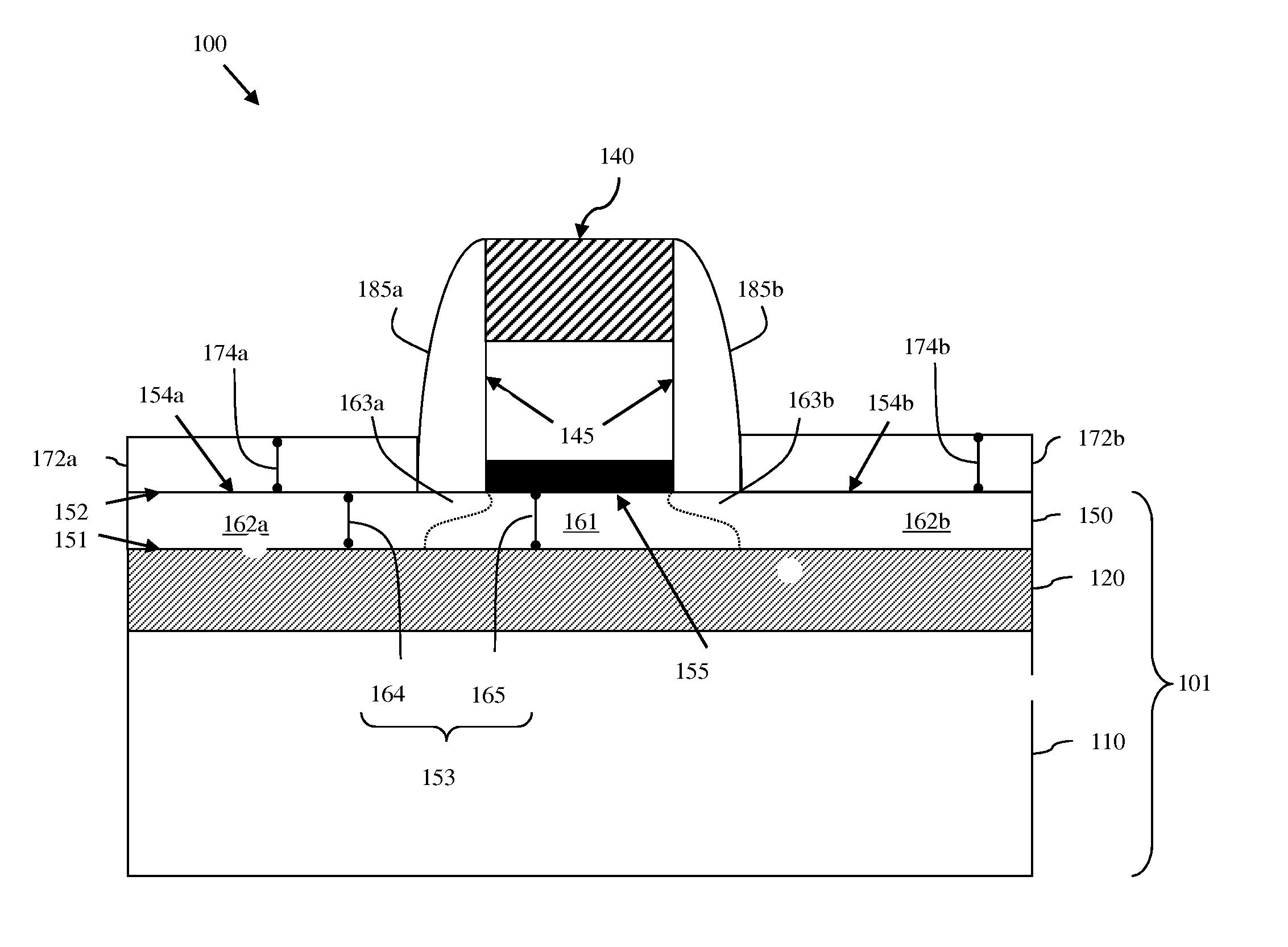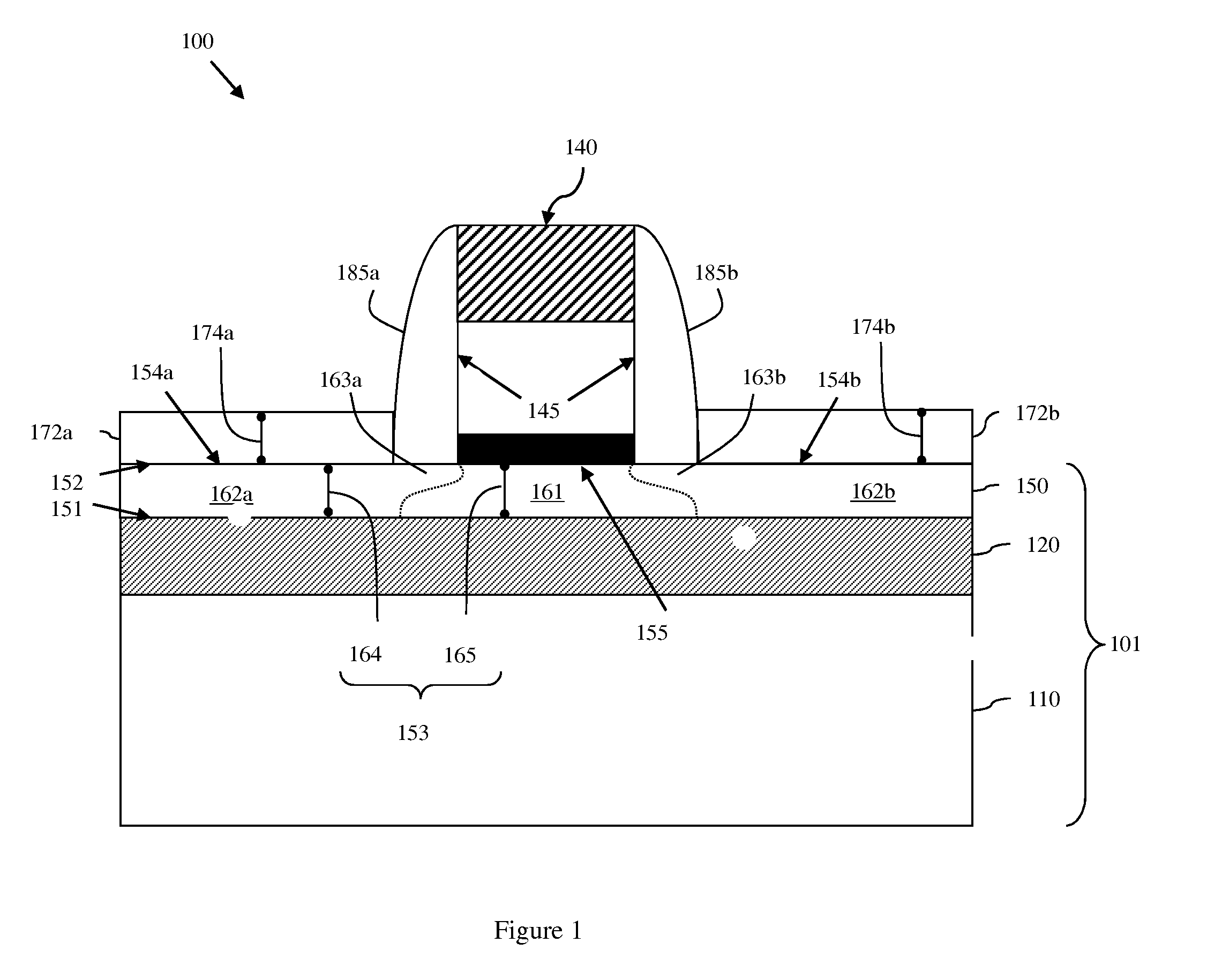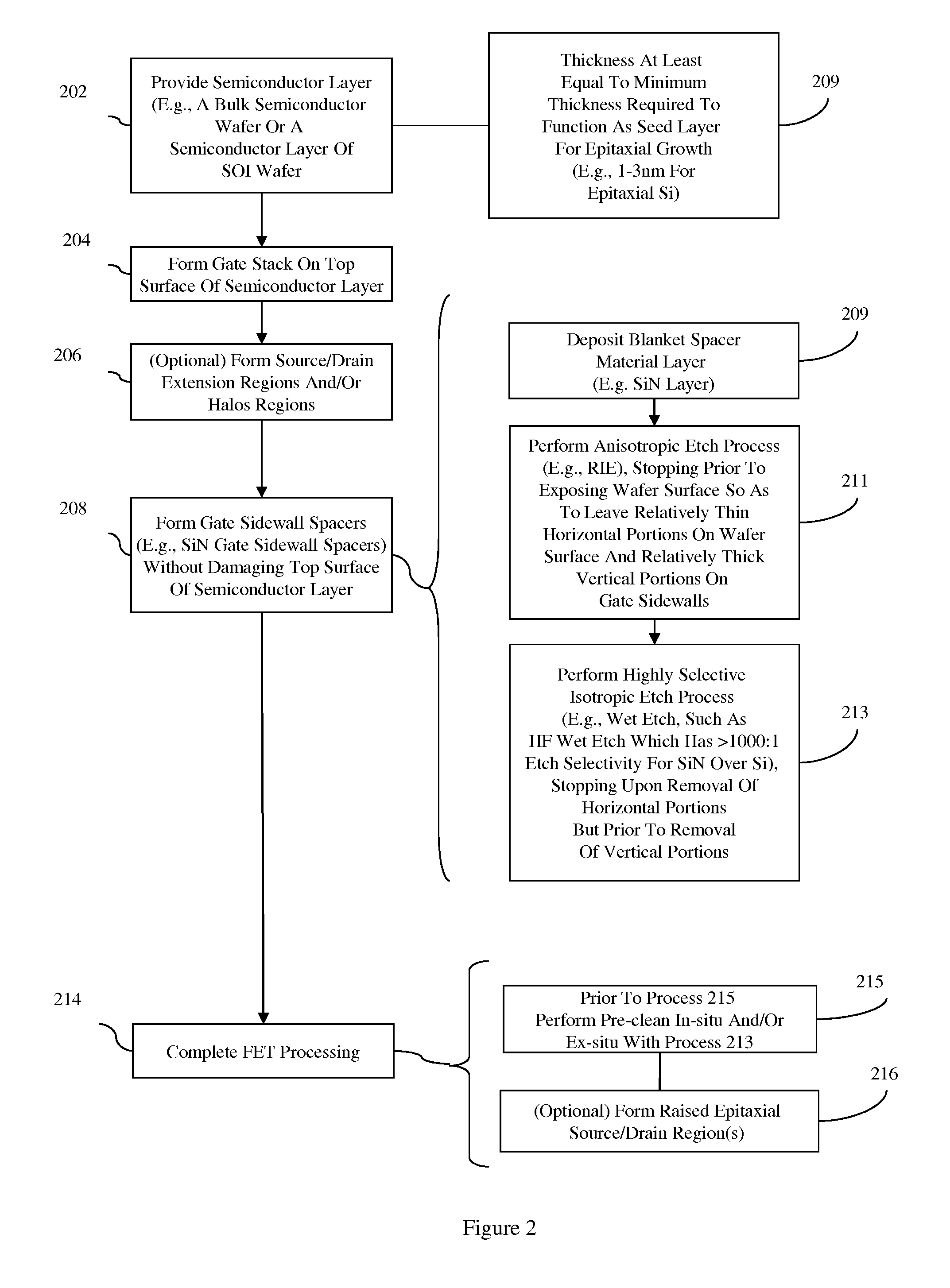Field effect transistor (FET) and method of forming the fet without damaging the wafer surface
a field effect transistor and fet technology, applied in the field of fets, can solve the problems of increasing wafer surface damage, device formation, device performance, etc., and achieve the effect of selective selection
- Summary
- Abstract
- Description
- Claims
- Application Information
AI Technical Summary
Benefits of technology
Problems solved by technology
Method used
Image
Examples
Embodiment Construction
[0022]The embodiments of the invention and the various features and advantageous details thereof are explained more fully with reference to the non-limiting embodiments that are illustrated in the accompanying drawings and detailed in the following description.
[0023]As mentioned above, conventional techniques for forming planar field effect transistor (FETs) on semiconductor wafers (e.g., a silicon-on-insulator (SOI) wafers, bulk silicon wafers, etc.) often result in damage to the wafer surface. Unfortunately, as devices are scaled in size, this wafer surface damage can have an increasingly significant impact on device formation and, ultimately, on device performance.
[0024]For example, it has been proposed that an extra-thin silicon-on-insulator (ETSOI) wafer could be used in order to provide a planar FET architecture suitable for the 22 nm technology node and beyond. An ETSOI wafer is a silicon-on-insulator (SOI) wafer comprising a semiconductor substrate 10, an insulator layer 20 ...
PUM
 Login to View More
Login to View More Abstract
Description
Claims
Application Information
 Login to View More
Login to View More - R&D
- Intellectual Property
- Life Sciences
- Materials
- Tech Scout
- Unparalleled Data Quality
- Higher Quality Content
- 60% Fewer Hallucinations
Browse by: Latest US Patents, China's latest patents, Technical Efficacy Thesaurus, Application Domain, Technology Topic, Popular Technical Reports.
© 2025 PatSnap. All rights reserved.Legal|Privacy policy|Modern Slavery Act Transparency Statement|Sitemap|About US| Contact US: help@patsnap.com



